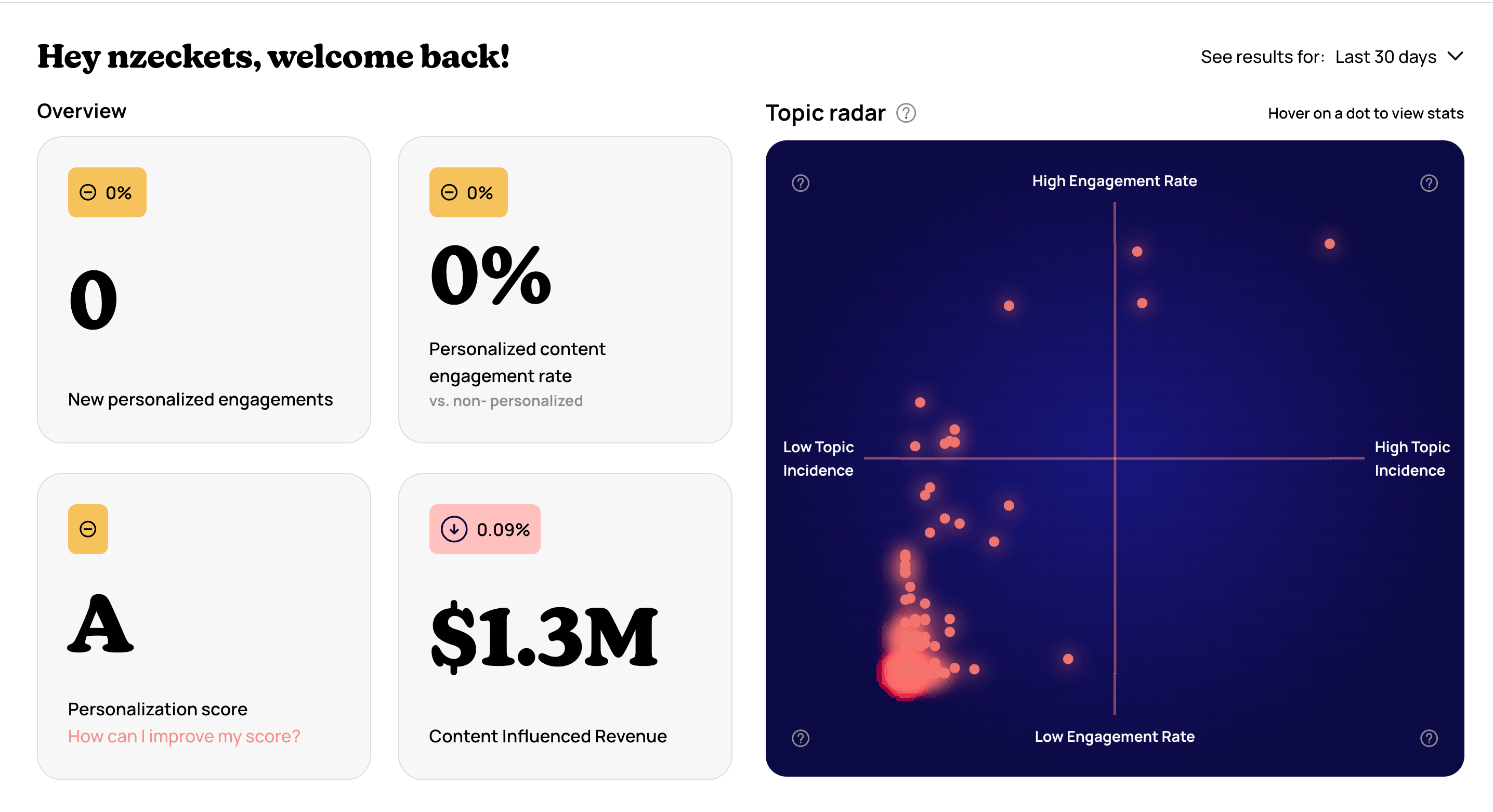Measuring the true impact of your content on revenue is essential for refining strategies and justifying budgets. At Air Traffic Control, we’ve developed a key metric that helps you directly connect your content marketing efforts to closed deals—Content Influenced Revenue. In this blog, we'll explain how this metric works and the value it brings to your marketing organization.
What Is Content Influenced Revenue?
Content Influenced Revenue is the total amount of revenue that has been impacted by your marketing content before a deal is closed. For instance, if someone from an account that later became a customer engaged with a piece of content—such as a blog post, case study, or marketing document—before the deal was finalized, that revenue is attributed as influenced by that content.
To break it down, let’s say you publish a blog post in August, and by October, you’ve closed a deal worth $20,000 with a company whose team engaged with that blog post. In this case, that $20,000 is counted as Content Influenced Revenue* because the marketing content played a part in the customer’s journey towards making a purchase decision.
How Is Content Influenced Revenue Calculated?
The process for calculating Content Influenced Revenue is straightforward but insightful. Here’s how we track and report it at Air Traffic Control:
- Engagement Tracking: We monitor engagements with your marketing content across multiple channels, including emails and tracked website visits within HubSpot. If someone from an account interacts with a piece of content, it’s logged.
- Closed-Won Deals: Once that account closes a deal, we check whether anyone at the company had interacted with any of your content before the deal was closed.
- Revenue Attribution: If the content engagement happened before the closed-won deal, the entire revenue from that deal is counted as influenced by that piece of content. For example, if the deal was worth $20,000, that full $20,000 would be attributed as *influenced revenue*—even if multiple people at the account engaged with the content, it’s only counted once per deal.
- Timeframes for Business Class vs. First Class Plans: The historical data used to calculate this revenue varies depending on your plan.
- On the Business Class plan, we track content engagement from the past 90 days.
- For those on the First Class plan, we extend the history to a full year, giving you a more comprehensive view of how your content influences revenue over a longer period.
Important Note: No Percentage Attribution
Unlike traditional multi-touch attribution models that attempt to assign a specific percentage of credit to each marketing interaction, Content Influenced Revenue is a straightforward measure. It doesn’t break down exactly how much of a deal’s value was driven by content. Instead, it highlights the fact that content played a role in the customer journey, providing a clear connection between content and revenue without complex fractional attribution.
The Value of Content Influenced Revenue
Understanding Content Influenced Revenue offers significant advantages for marketing teams:
- Justify Content Efforts: It directly demonstrates the role that your content plays in generating revenue, helping you make a clear case for the value of your content marketing efforts.
- Optimize Content Strategy: By tracking which pieces of content influence the highest revenue, you can refine your content strategy. Double down on content types and topics that are driving meaningful engagement and revenue impact.
- Better Budget Allocation: Knowing the content that drives revenue enables better budget decisions. You can focus resources on creating and promoting content that has a proven impact on deals.
- Cross-Functional Insights: Sales and marketing teams can collaborate more effectively when they both have visibility into the content that’s contributing to closed deals. This metric fosters a stronger connection between content creation and sales outcomes.
Conclusion
The Content Influenced Revenue metric offers a powerful way to understand the true revenue impact of your marketing content. By giving you a direct view of how content plays into closed deals, Air Traffic Control enables marketing teams to demonstrate ROI and refine their content strategies to focus on the materials that matter most.
If you’re looking for a way to track and improve the effectiveness of your content in driving revenue, Air Traffic Control’s Content Influenced Revenue feature is the perfect tool. Sign up for our First Class plan today to get a year’s worth of content engagement insights and maximize the impact of your marketing efforts



